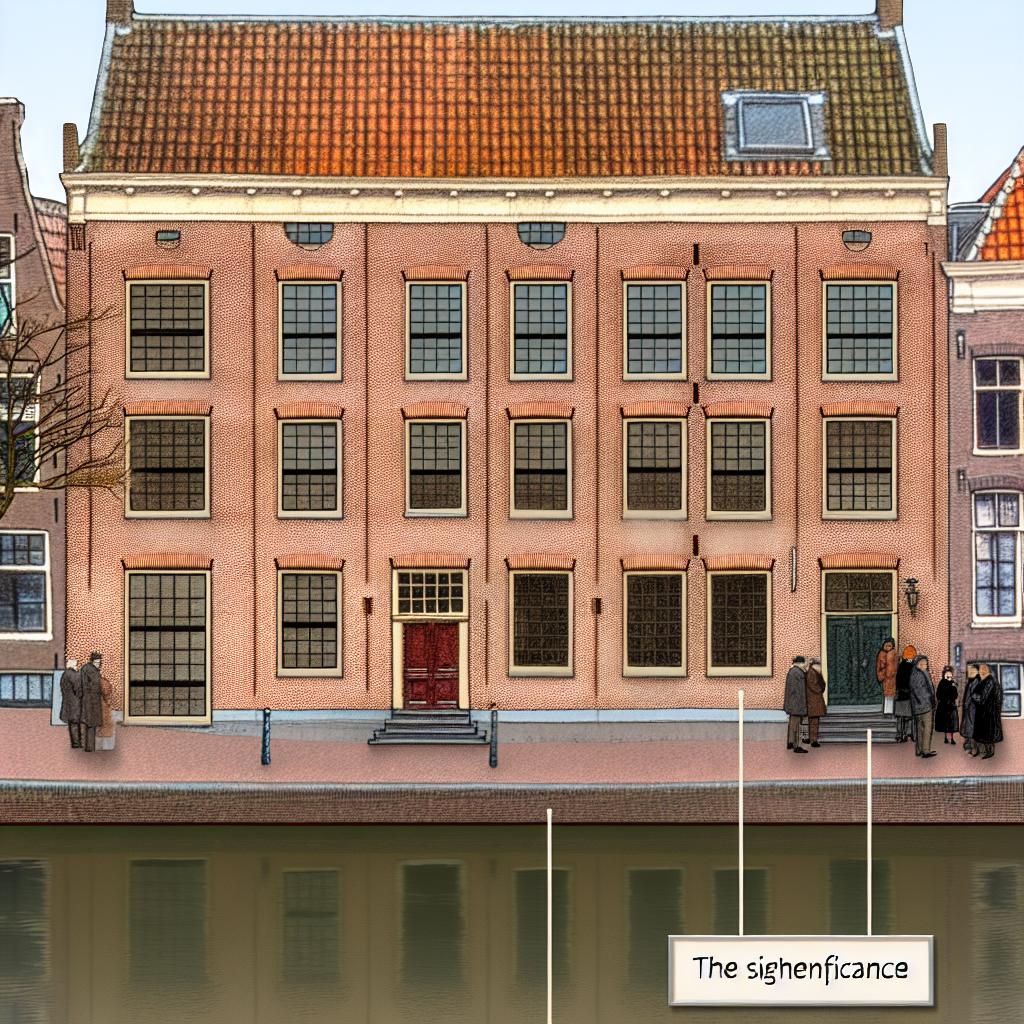Contents
The Historical Significance of the Anne Frank House
The Anne Frank House, situated in Amsterdam, holds immense historical significance as it preserves the hidden annex where Anne Frank and her family lived in hiding during World War II. The museum offers an enlightening glimpse into the life of Anne Frank, a young Jewish girl whose journal documenting her time spent in hiding has gained worldwide recognition.
Background
Anne Frank was born in 1929 in Frankfurt, Germany. Her family sought refuge in Amsterdam in 1933, fleeing from the rising threat of Nazi Germany. In July 1942, the Frank family, along with four others, began their clandestine life in a secret annex at Prinsengracht 263. Anne’s diary, which she began writing while in hiding, provides not only a personal account of her daily struggles and thoughts but also offers a deep and meaningful perspective on the resilience of the human spirit amidst dire and often terrifying circumstances.
The Museum’s Establishment
The transformation of the Anne Frank House into a museum officially occurred in 1960. This initiative aimed to preserve the annex and perpetuate Anne’s lasting legacy, which communicates messages of hope, tolerance, and the essential importance of human rights. Presently, the house functions as a poignant memorial to Anne’s life and era, serving as a powerful reminder of the past and the necessity of maintaining an awareness of history’s lessons.
Anne’s Legacy is highlighted through various exhibits and the preservation of the actual annex. Visitors can explore the area where Anne, her family, and the others lived for over two years, providing a tangible connection to history.
Significance of the Museum
The significance of the museum extends beyond being a historical site; it acts as a profound educational venue. Visitors gain insights into the history of the Holocaust and WWII through the reflections captured in Anne’s diary. The personal artifacts showcased in the museum, including Anne’s original diary, offer a contextual appreciation of how war and persecution impact individuals and families on an intimate level.
Moreover, the Anne Frank House provides a thought-provoking experience that educates over one million visitors each year. It underscores the importance of tolerance and actively works to combat discrimination. Rather than solely serving as a historical preservation, the museum actively engages visitors in discussions about social justice, human rights, and how past events must inform present and future attitudes and policies.
Interactive Exhibits in the museum foster deeper understanding and engagement with the topics presented. Visitors can participate in discussions and gain insights into the relevance of Anne’s story in contemporary society.
Insights and Reflections
Visiting the Anne Frank House offers profound insights into the challenges faced by the Frank family and the millions of others who endured similar fates during this dark historical period. The museum maintains a steadfast commitment to historical accuracy and the power of personal narratives, enabling visitors to gain a broader understanding of the war’s personal impact on individuals. This enhances empathy and fosters a deeper level of social awareness.
In conclusion, the Anne Frank House stands as a testament to the impact that one individual’s story can have on the world. It embodies the very essence of reflection and learning from the past. For those seeking to delve deeper into Anne Frank’s life and legacy, or to participate in its educational programs, the museum’s official website provides extensive resources and visitor information: Anne Frank House Museum.

